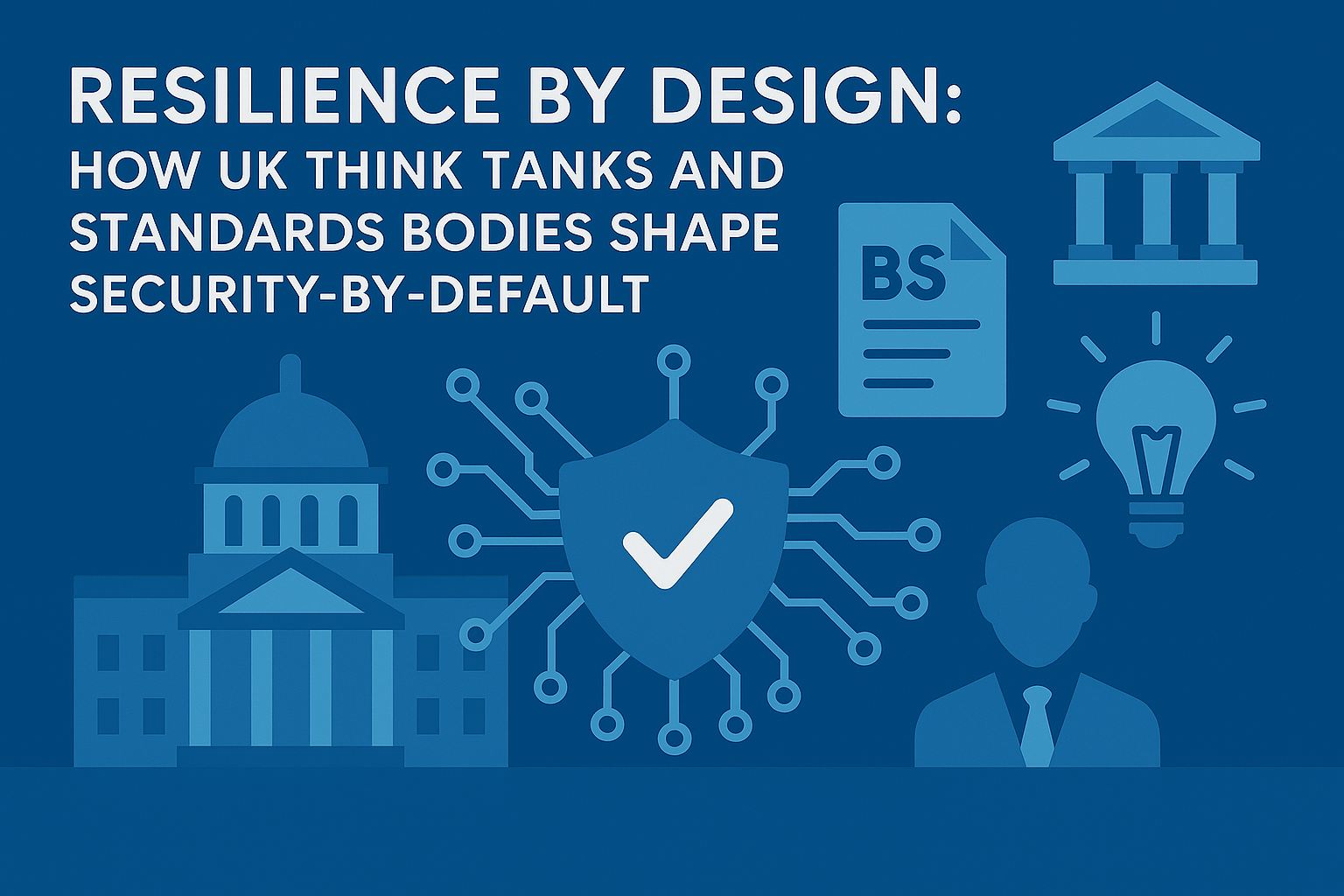Secure by default isn’t just a buzzword; it’s becoming the blueprint for how Britain builds its digital infrastructure. In a world of escalating cyber risk, the UK is shifting from reactive defences to resilience by design, embedding security principles from the earliest stages of product development, system architecture, and national infrastructure planning. This shift isn’t being driven by legislation alone. It’s being shaped by a constellation of think tanks, technical standards bodies, and influential advisors who guide how resilience is defined, measured, and built into UK systems from day one. This article unpacks who’s influencing the secure-by-default movement in Britain, and how vendors, policymakers, and professionals can engage.
Contents
1. What ‘Resilience by Design’ Means in Practice
At its core, it’s about engineering out vulnerability, rather than patching after deployment. That includes:
- Default secure configurations (e.g. no open ports, minimal privileges)
- Built-in monitoring and logging
- Secure update mechanisms
- Fail-safe behaviours under attack
- Modular, fault-tolerant architectures
The aim is not just prevention, but recoverability and continuity under stress, especially for systems that underpin health, transport, finance, and defence.
2. Who’s Shaping the UK’s Approach?
NCSC (National Cyber Security Centre)
- Publishes foundational guidance on secure-by-design and secure-by-default principles
- Released documents like Secure Design Principles, Zero Trust Architecture, and Resilient-by-Design Cloud Patterns
- Works directly with vendors via i100 and assurance programmes
Why it matters: NCSC’s guidance becomes the de facto UK standard for public sector and CNI procurement.
DSIT (Department for Science, Innovation and Technology)
- Sponsors Digital Security by Design (DSbD) initiative
- Leads policy development linking resilience to digital regulation and funding
- Embeds resilience in Cyber Local, CyberASAP, and DORA/NIS2 adoption frameworks
Digital Security by Design (DSbD)
- Backed by Innovate UK, Arm, and academia
- Focuses on new chip-level architectures (e.g. CHERI) that eliminate entire vulnerability classes
- Supports UK companies building secure-by-design hardware, compilers, and operating systems
Why it matters: DSbD aims to make resilience native to computing, not just added later.
RUSI and Other UK Think Tanks
- Royal United Services Institute (RUSI) frames resilience as a national security imperative
- Influences government policy via reports, briefings, and advisory groups
- Other players: Chatham House, Oxford Internet Institute, Centre for Long-Term Resilience
IET / BSI / CIISec
- Develop cyber-resilience guidance for engineering, OT, and critical systems
- Influence how resilience is applied in sectors like transport, energy, and manufacturing
- Work closely with UK Cyber Security Council to align standards with future chartership
3. Standards Driving Secure-by-Default Expectations
- NCSC 10 Steps to Cyber Security (2023 refresh)
- NIST SP 800-160 Vol 2 – Focus on engineering resilience
- ISO 22301 – Business continuity management
- DORA – Mandating digital operational resilience in finance
- NIS2 – Increasing the bar for resilience across essential services
Outcome: Buyers are starting to demand built-in resilience in RFPs and frameworks, not optional extras.
4. Resilience by Design in Funding and Innovation
Many UK funding programmes now embed resilience principles as part of eligibility:
- CyberASAP – Emphasises secure architectures from prototype stage
- Cyber Runway – Scores vendors on assurance, logging, and response design
- SBRI (Small Business Research Initiative) – Seeks solutions that scale securely
- Cyber Local / Shared Prosperity Fund – Supports local resilience infrastructure
Takeaway: If you don’t embed resilience early, you won’t meet the bar later.
5. Where to Influence or Get Involved
- Join DSbD demonstrator projects or engage via Digital Catapult
- Attend RUSI or TechUK resilience briefings
- Contribute to IET, CIISec, or BSI working groups
- Respond to DSIT consultations on cyber-physical and operational resilience
- Pilot resilience practices in a regional cluster (e.g. WM CWG, ScotlandIS, NI Cyber)
Final Thoughts
Britain’s cyber future won’t just be secured by incident response teams, it will be engineered into the foundations of our digital society.
And that future is being built right now, in standards meetings, policy roundtables, chip design labs, and SME accelerators.
Resilience by design is more than a trend. It’s the UK’s quiet revolution in cyber thinking, and the smart players are getting involved early.
References
- Inside the UK Cyber Ecosystem: A Strategic Guide in 26 Parts
- The Insider’s Guide to Influencing Senior Tech and Cybersecurity Leaders in the UK
- Resilience by Design: How UK Think Tanks and Standards Bodies Shape Security-by-Default
- From Policy to Procurement: How Standards Bodies Influence UK Cyber Buying Cycles
- Cyber Across European Governments: Key Bodies, Funding, and Coordination
